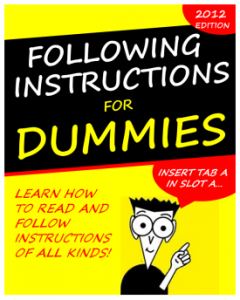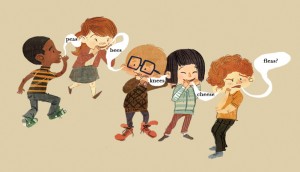Sometimes you have to ask the simple questions because they tend to be the hardest to answer: Why do we use a creative brief at all when so many people seem to question its purpose and doubt its usefulness? Does this document have a role today?
The hardest questions to answer are therefore the most important questions to ask.
So I will go down this road and venture an answer. In my reading about the brief, and in my many discussions, I hear more complaints about this document than direct answers that address its role. But my answer is clear and unequivocal: Yes, the creative brief is as important today as it was when it was first introduced in the 1960s.
Here is my rationale for the creative brief:
1. The creative brief is a set of instructions.
Two thoughts come to mind here. The first is a recollection of something my 7th grade science teacher, Mr. Bredeson, posted on the wall of his classroom. It was a hand-lettered sign that read: “When all else fails, read the directions.” 
I’ve never forgotten this simple lesson. I repeat it every semester when my college classes begin anew. Guys tend to be the biggest offenders: They think they know how to put something together and dive in. I’m sure there are some who succeed without a hitch. But the important question is, “Why?” Unless you have time to kill, why would any sane, educated person attempt to assemble something without reading the instructions?
Which leads me to my second thought: If you’ve ever purchased something from Ikea, you know it requires assembly. The directions that all Ikea products come with are illustrations, not written instructions. They are generally clear and easy to follow. Could you assemble one of Ikea’s products without following those instructions? Maybe. But why would you even think about doing such a foolish thing? Unless you have time to kill and are incredibly stubborn, those instructions are designed to get you from a pile of pieces to a usable product in the least amount of time. They are designed to make your life easier.
 You simply can’t get to point B from point A quickly and efficiently without those instructions.
You simply can’t get to point B from point A quickly and efficiently without those instructions.
2. Unlike Ikea instructions, a creative brief must also inspire.
Ikea instructions are designed to build a useable piece of furniture. A creative brief is designed to inspire the creative team to produce sales-generating creative. It must offer insights into the product, the consumer’s thinking and it must also kick-start the creative team with ideas, what John Hegarty called the “first ad.”
This is where I think the complaints arise. There are pedestrian briefs and inspiring briefs. Too many of the former, too few of the latter. So the call to junk the brief arises from a dearth of well-written sets of instructions. In other words, the typical brief may tell you what to do, but it gives the creative team no spark.
3. The creative brief is a measuring stick to judge the work.
There are many analogies here. One of my favorites is the “Telephone Game” (or Chinese whispers if you live somewhere else). It’s a kid’s game.
One person begins by whispering a word or phrase to the person next to him. That person then whispers what she thinks she heard to the next person. And so on. The typical result is usually unrecognizable once five or six people have passed on the word and it reaches the end of the line. 
This is a remarkably clear rationale for a creative brief, and it stands up to scrutiny when the work is presented for review. If you don’t have clear directions in the beginning, you end up with unclear and usually off-message work at the end.
Another way of saying this is, “Garbage in, garbage out.”
The point here is simple: The creative brief is not going anywhere. It has a permanent role in the creative process. It is the first step in the creative process. It exists to fulfill the three, basic functions discussed above.
In my reading, I have come across nothing that challenges the validity of these three points, perhaps because no one even thinks about that.
Instead, I read frustrated complaints about poorly written briefs; creative processes that are missing briefs entirely; briefs that don’t address the realities of today’s mobile environment; briefs that fail to address the emotional rationale of consumers’ behavior; briefs that are not flexible.
But nowhere have I read that anyone proposes scrapping the brief. At its best, a brief is merely an organic placeholder, flexible enough to adapt to any circumstances. With this important caveat:
It’s not about the questions. It’s about the answers.

